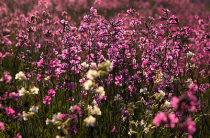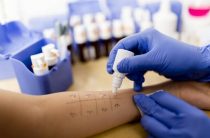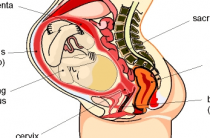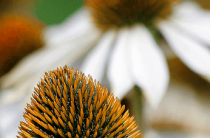Almost every third inhabitant of our planet suffers from allergies. This disease is rapidly gaining momentum. And this is due to our vigorous activity, the improvement of old ones, and the construction of new industrial giants. This harms not only the environment, but also our immune system. As a result, it is simply not able to fight toxic substances, and it takes absolutely harmless components for foreign agents. Allergy is associated with increased sensitivity of the body. And unfortunately, it is becoming more resistant to drugs, so scientists and doctors need to develop more and more new treatments.
Antihistamines
Before starting treatment, the allergen should be established. With the manifestation of the primary symptoms of allergy to pollen , namely rhinitis, conjunctivitis, rash on the body, fever, you should consult a doctor. By conducting some tests, they will establish the true cause of the disease, which can be successfully dealt with. As a rule, provocateurs of allergies are flowering plants, which are pollinated with the help of wind. Trees begin their flowering from the end of March, and everything continues until September with the flowering of weeds.
First of all, any contact with the plant is eliminated. Antihistamines are prescribed. Three generations of these agents have been developed, the last of which is the most optimal and harmless option for most patients. I would like to dwell in more detail on each of them. The first generation of drugs are easily absorbed into the bloodstream and have the desired effect, eliminating allergic symptoms. But the downside is their short duration. Therefore, you need to take them often enough, tying to a meal. The disadvantages also include a considerable number of side effects:
| Drowsiness | Distracted attention | Vomit |
| Inhibition of reactions | Tachycardia | Rapid pulse |
| dizziness | Nausea | Anxiety |
Also, it is worth noting a lot of contraindications, including disorders in the liver, kidney failure, advanced age, heart failure, problems with the gastrointestinal tract, glaucoma, bronchial asthma. But, at the same time, their rather “loyal” composition is suitable for the treatment of children. Therefore, the drug should be prescribed to each individually. Such drugs include Suprastin, Tavegil, Diphenhydramine, Peritol, Pipolfen.
The second generation of antihistamines has a similar composition to the previous one, but is less harmful. When absorbed into the blood, the drug stops the release of histamine from the cells, and the result remains long enough - within a day. They are convenient to use, as they are consumed once a day, regardless of meals. Some of them are allowed during pregnancy if the risk of their use is justified by the desired result. Among these funds are the following:
| Terfen | Claritin | cetirizine |
| Hismanal | Loratadine | ebastine |
| Astemizol | Zyrtec | Kestin |
The newest allergy medications are third-generation antihistamines. They were developed taking into account all the shortcomings of the previous ones, thereby increasing their merits. They are considered active metabolites. It is very rare to observe any adverse reactions, especially disorders of the nervous system. Malaise can occur only if the indicated dosages are not observed. I would like to consider the main ones:
| Akrivastine | The use of the drug relieves any allergic reactions, including skin manifestations with seasonal and year-round allergies. For pregnant women, the drug is prescribed only at the discretion of the doctor, and for children under 12 years of age is contraindicated. |
| Desloratadine | It has its own analogue called Erius and Ezlor. The effect of taking it will become noticeable within half an hour after use. Also, like the previous drug, it is contraindicated in children and people with individual intolerance to the components. |
| Hifenadine | It is often prescribed for hay fever, as it relieves its main symptoms from the respiratory system. In pregnant women, after using the drug, nausea, vomiting, and fever were noticed. Therefore, it is undesirable to use it in the first trimester of bearing a baby. |
| Fexofenadine | Eliminates allergic rhinitis and chronic urticaria. Its use by children is permissible from the age of six. It is not recommended to use in the presence of chronic pathologies of the liver and kidneys. |
| fenspiride | It is used for bronchitis and allergic diseases of the upper respiratory tract. Available in two forms: syrup and tablets. In the form of a syrup, it is indicated for use by children from infancy. |
| Xizal | Qualitatively relieves hay fever in any of its manifestations, both at an early stage and in an advanced case. For children, there are drops for oral administration from the age of two. |
Nasal and eye drops
A patient with hay fever is primarily tormented by rhinitis. It can be in the form of nasal congestion or, conversely, abundant sputum discharge from the nasal cavity. Almost everyone complains of severe itching, which provokes frequent bouts of sneezing, or even burning. Allergic rhinitis has three forms:
- Runny nose that occurs periodically (due to a single exposure to the irritant on the mucous membrane);
- Persistent runny nose (due to household chemicals);
- Seasonal runny nose (due to pollen from flowering plants).
When choosing a drug, do not focus on your intuition, but rather consult a doctor. Depending on the severity of allergic rhinitis, nasal preparations with different composition and quality of action are prescribed. In the case of a mild form, it will be enough to use simple moisturizing or washing products. If rhinitis is in an acute form, you need to choose a spray with the right hormonal composition. Now let's look at what drops and sprays are:
- Vasoconstrictor;
- Not hormonal;
- Hormonal;
- Combined;
- Moisturizing.
Vasoconstrictor drops are often used for exacerbations of allergic rhinitis. The active ingredients that make up their composition can be addictive, which is why their use is limited to 5-7 days. In addition, the mucosa is greatly dried, which leads to its long-term recovery. In their defense, we can note the speed - the result comes from the first minutes. And they need to be taken once or twice a day. These include:
| Nazol | Naphthyzin | Farial |
| Evkazolin | Tizin | Sanorin |
| Nazivin | Galazolin | Rinazolin |
Doctors resort to treatment with hormonal drugs if others are powerless. Their action and effectiveness are similar to vasoconstrictor drops. Due to their composition, they are taken no more than a week, as they can affect the hormonal background of the patient's body. Available only in the form of a spray, as strict adherence to the dosage is required. These are drugs such as Nasonex, Benacap, Sintaris, Flixonase, Prednisolone and others.
As in childhood, and during pregnancy, non-hormonal drops and sprays can be considered safe. Their composition allows you to use some of them even for kids. Appointed for a long time with acute or chronic perennial rhinitis:
- Allergodil;
- Zyrtec;
- Fenistil;
- Cromhexa.
With confidence, we can talk about the absolute harmlessness of drugs for washing the nose (moisturizers). In their composition, they contain only sea water and salt. Contribute to the rapid and natural healing of the mucous membrane, actively moisturize it. In a matter of minutes, they free the nasal cavity from sputum and allergens, while facilitating breathing. These include:
| Humer | No-salt | Marimer |
| Aqua Lore | Physiomer | Quicks |
| Aqua Maris | Otrivin Sea | Dolphin |
Almost all antihistamine eye drops have a fairly mild effect on the eye membrane, therefore they are indicated for use by children of any age. The most popular include: Opatanol, Zodak, Ketotifen, Kromoheksal. Many nasal drops are also allowed to be used as eye drops.
Local preparations
These drugs include creams, ointments and gels to relieve skin manifestations of allergies. To remove the manifestations of urticaria in a short period of time, taking antihistamines alone will not be enough. Therefore, they resort to local therapy. These drugs relieve inflammation within an hour, have an antipruritic effect, which allows you to fully relax and normalize sleep. Like any medicine, it has its own gradation.
Hormonal ointments
Hormonal creams and ointments are used for ulcers on the skin, but only with a dry appearance. They are prescribed for a short course, since hormones are quickly absorbed through the skin into the blood, which cannot but affect the general health of the patient. But, nevertheless, some of them have a minimal therapeutic effect that can be used by children:
| Advantan | Celestoderm | Elocom |
| Lorinden | Flucinar | Fluorocort |
Non-hormonal ointments
This type of drug has anti-inflammatory, antipruritic and anesthetic effect. Some of them cool the skin, which allows you to relieve the burning of wounds. The composition includes only natural ingredients, so there are no age restrictions. It is also allowed to use for a long time, for example, with chronic urticaria:
| Elidel | Bepanthen | Wundehill |
| Fenistil | Skin Cap | Gistan |
Moisturizers
If the urticaria is in the nature of dry skin and its peeling, then it is worth moisturizing it with creams. For this, any greasy-based baby creams can be used. They should be applied to the body in a thin layer up to five times a day. The frequency of their use is explained by the fact that they are absorbed very quickly, so the effect does not last very long. Among them are:
- Mustella;
- Physiogel;
- Bioderm;
- Lipikar;
- Locobase.
Folk medicines for allergies
Increasingly, people began to use the advice of our ancestors in the treatment of hay fever. Folk methods are quite effective, as they have been proven for many years. Nettle works well for hay fever. An infusion is prepared from this plant: pour two tablespoons of dry grass with boiling water (0.5 l) in a thermos, let it brew for two hours. After all this, you just need to strain and drink half a glass several times a day. This will help to solve the problem with manifestations of urticaria and coughing fits.
Populists strongly advise using the following collection for pollen allergies:
- 1 spoon of corn stigmas;
- 5 spoons of centaury;
- A few spoons of St. John's wort;
- 4 tablespoons of crushed rose hips;
- 3 tablespoons of dandelion (its root).
These components are thoroughly mixed and take only one spoonful of the mixture, which is poured with two glasses of boiling water. Let stand for a day, and then bring to a boil over a fire. You need to drink a quarter cup three times a day.
Celery juice is very useful, which you need to drink daily. This helps to remove the allergen from the body. His solution with water is dripped into the nose for allergic rhinitis. Use a mixture of celandine and string, which will remove any allergic manifestations. To do this, take the herbs in the same amount and pour boiling water in a ratio of 1:4. It is necessary to insist for 40 minutes, and then drink during the day instead of plain tea.
If you are a fan of green herbal tea, drink decoctions of chamomile and mint during an exacerbation. These herbs can not only reduce the inflammatory process on the skin, but also calm the nervous system. Healing herbs are also used when taking baths, in any combination of them: string, lavender, lemon balm, hawthorn, angelica, chamomile, immortelle, dog rose and others. To relieve burning and itching from the skin, add pine needles to the water. If it is not possible to use natural ingredients, use their analogues in the form of essential oils of spruce, fir, pine, eucalyptus.
For allergic rhinitis, drip your nose with aloe or Kalanchoe juice. If you are not allergic to honey, dilute a small amount in a teaspoon of warm water with a few drops of lemon juice. It is necessary to drip three times a day. Honey will help remove the allergen from the nasal cavity and protect the membrane from re-intoxication.
It is very easy to prepare a nasal rinse at home. You will need one tablespoon of sea or regular table salt diluted with a glass of water. Such washings will help moisturize the mucous membrane and reduce sneezing attacks.
We advise you to read:















